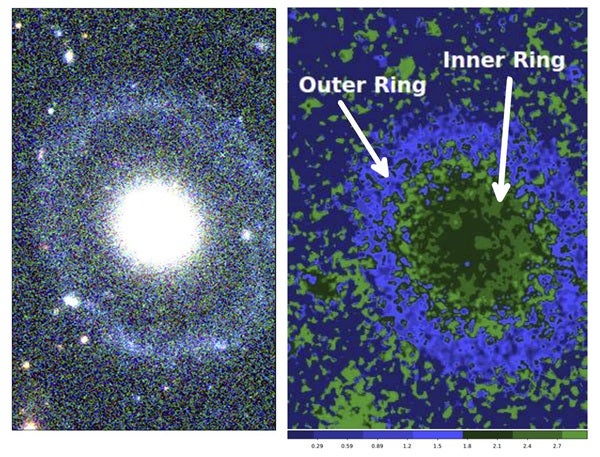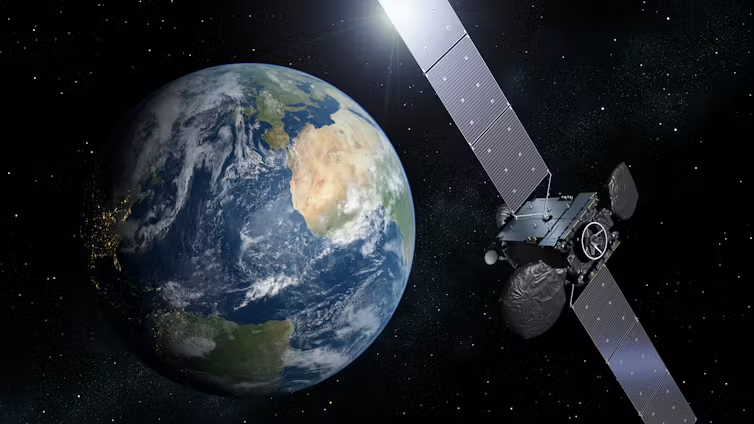PGC 1000714 is an innocuous name for an exciting object. This galaxy, which lies approximately 359 million light-years from Earth, is the rarest of the rare – a never-before-seen specimen within an uncommon class of “ringed” galaxies. In a paper published in Monthly Notices of the Royal Astronomical Society in November, astronomers took their first step toward understanding this strange galaxy and its formation history.
Why is PGC 1000714 so special? To begin with, it’s a Hoag-type galaxy. This class of galaxies is named for the first such object of their kind discovered in 1950, Hoag’s Object. Burcin Mutlu-Pakdi, a graduate student at the Minnesota Institute for Astrophysics, University of Minnesota Twin Cities and University of Minnesota Duluth, is a co-author on the paper and is credited with the galaxy’s discovery. She says that “less than 0.1% of all observed galaxies are Hoag-type galaxies.” Thus, PGC 1000714 is already unique when compared with the more typical types of galaxies that populate the universe.
But even among its Hoag-type kin, PGC 1000714 stands out. Hoag-type galaxies display a red, relatively old inner core of stars, surrounded by a ring of bluer, newly-formed stars. Though the core and the ring are associated with each other, no visible structures connect them. PGC 1000714 contains both of these characteristics, but with an additional surprise — a second inner ring, which is older, more diffuse, and redder than the outer ring.
To find this inner ring, Mutlu-Pakdi modeled the central red component of the galaxy and subtracted it from the images to search for additional features. Because the second inner ring is not blue, but red, its stars are older than those in the outer ring and likely represent an earlier epoch of star formation.
Galaxies are classified by their morphology, which is largely a product of the galaxy’s past. Oddities like Hoag-type galaxies have likely undergone unique formation or interaction histories that are unlike the bulk of observed galaxies in the universe. Mutlu-Pakdi and her coauthors speculate that PGC 1000714’s strange morphology may be due to the incorporation of a gas-rich dwarf galaxy in the past.
The process of galaxy formation spans billions of years. Thus, watching one galaxy evolve is impossible; instead, astronomers study galaxies in varying stages of evolution, essentially viewing snapshots, to reverse engineer the complete picture. Mutlu-Pakdi says that “it’s impossible to know how the rings of this particular galaxy were formed,” based on the observations of this galaxy currently available. But with more data, and if more galaxies like this one are found, a clearer picture of the history of such objects will surely emerge. She stresses that a discovery like PGC 1000714 “challenges our current theories and assumptions about how the Universe works. It usually tells us that we still have a lot to learn.”










